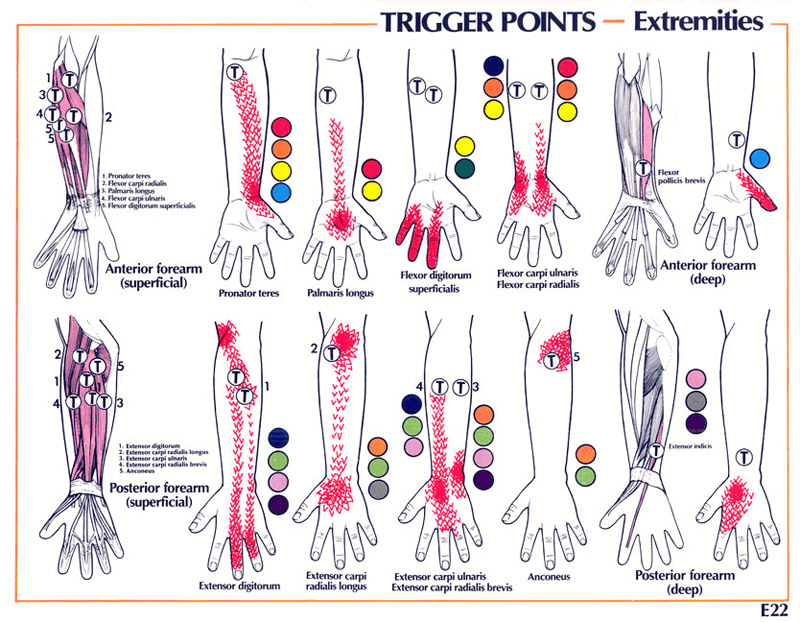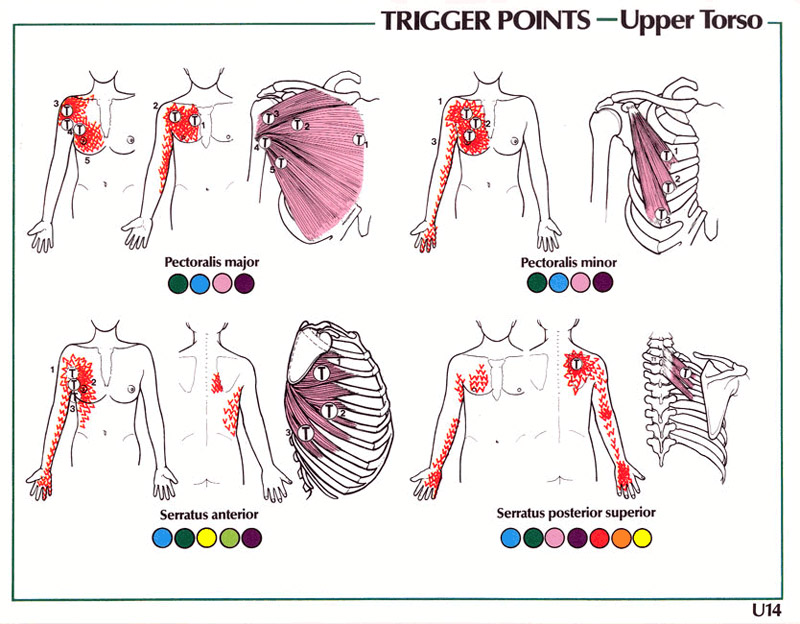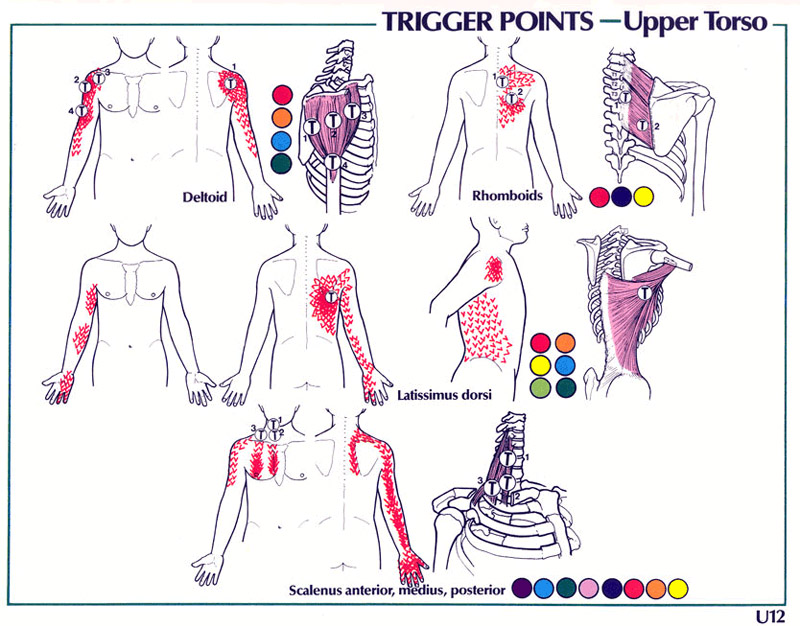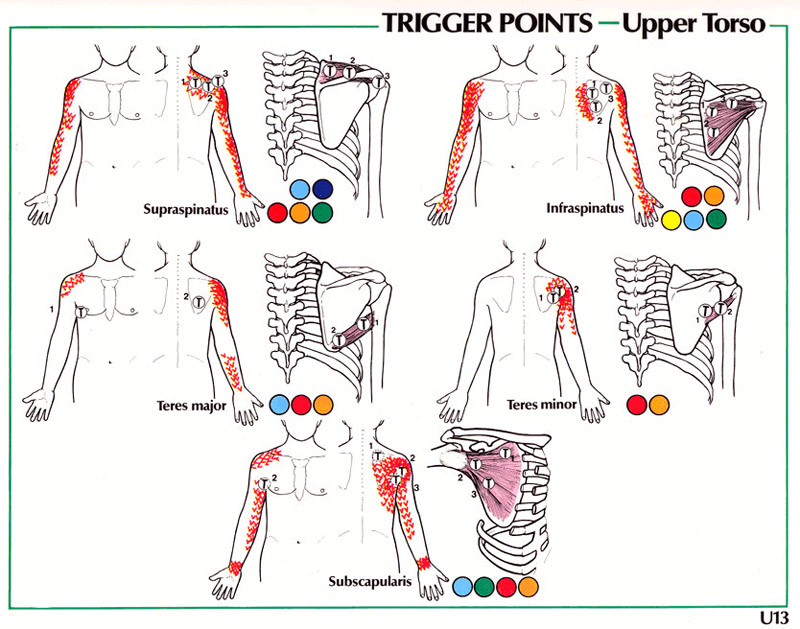Carpal Tunnel Syndrome is one of the most common injuries in our society. With Carpal Tunnel Syndrome the person will feel pain, burning sensation, tingling, numbness and weakness or some of the symptoms. He might feel the symptoms in one hand or both.
There are three different nerves which exit the cervical spine, penetrate under the clavicle (Collar bone) continue into the armpit and into the shoulders, forearms and hands. The nerves are: The Median n, the Ulnar n. and the Radial n.
These three nerves may be trapped by spastic muscles in the neck, under the collarbone and under the armpit and cause these symptoms.
The muscles, which could be responsible for this dysfunction, are:
- Scalnus – The Scalenus muscles, which located in front, side and back of the neck, have a powerful impact on neck structure and function. They can straighten the normal neck curvature, or even reverse it. The anterior and lateral scalenus could compress nerves, and will produce pain and radiation (tingling sensation and numbness) to the neck, shoulder, and arm down to the fingers.
- Supraspinatus – This muscle is originated in the upper part of the scapulae (shoulder blade) and is connected to the shoulder joint. When in a spasm the pain would be felt in the shoulder and all the way down the arm to the wrist.
- Infraspinatus (Rotator cuff muscle) – This muscle covers the lower part of the scapulae (shoulder blade) and is connected to the shoulder joint from the back. When in a spasm the pain would be felt between the scapulae and the spine and down the arm all the way to the fingers.
- Teres major – This muscle is originated in the lower edge of the scapulae and is connected to the anterior (front) part of the arm. When in a spasm the pain would be felt in the side of the shoulder and in the back of the forearm.
- Subscapularis – This muscle is originated in the anterior (front) part of the scapulae and is connected to the front part of the shoulder joint. When in a spasm the pain would be felt the top and back of the shoulder and down the inner part of the arm and the wrist.
- Pectoralis Major – This muscle is originated in the chest and is connected to the upper part of the arm from the front. When in a spasm the pain would be felt in the shoulder, chest and down the inner part of the arm to the elbow area.
- Pectoralis Minor – This muscle is originated in the third, fourth and fifth ribs in the side of the rib cage. It. is connected to the front tip of the scapulae (coracoid process) in the shoulder joint. When in a spasm the pain will be felt in the front part of the shoulder, the chest and down the inner arm to the fingers.
- Subclavius – This muscle is between the 1st rib in the front and the clavicle (collar bone). When in a spasm the pain would be felt in the anterior (front) shoulder and down the arm to the fingers.
- Biceps Brachi – This muscle is connected between t he arm and the forearm. When in a spasm the pain would be felt in the shoulder and down the arm to the thumb.
- Triceps and Anconeus – These muscles are connected between the shoulder joint and the posterior (back) forearm. When in a spasm the pain would be felt in the shoulder and the back of the arm and forearm.
- Coracobrachialis – This muscle connects the front tip of the scapulae (coracoid process) to the anterior arm. When in a spasm the pain would be felt in the shoulder and down the arm to the fingers.
- Latissimus Dorsi – This muscle originates in the lower back and is connected to the inside of the shoulder. When in a spasm the pain will be felt in the anterior part of the shoulder and the lower back.
- Forearm flexors and extensors – These muscles originated in the elbow and connected to the wrist and hand. When they are in spasm the symptoms will be felt in the wrist and the hand.





